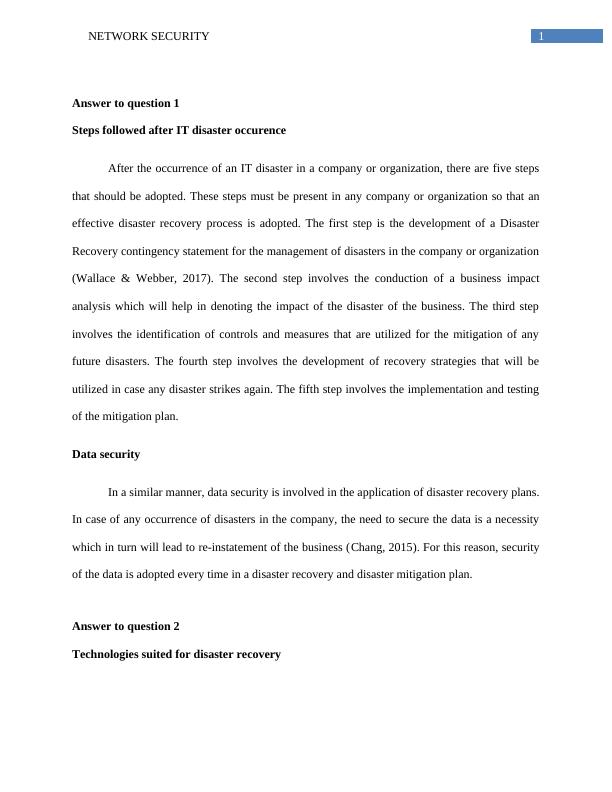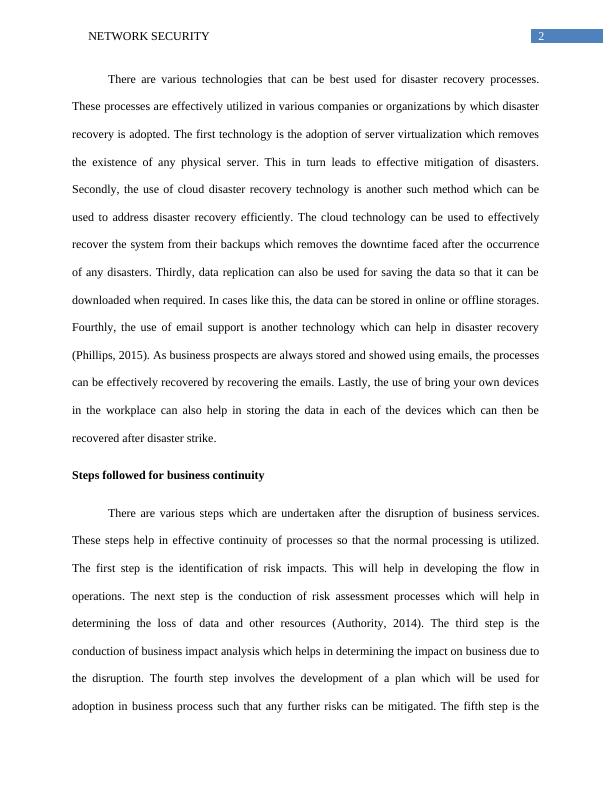Network Security and Disaster Recovery Plan
Added on 2023-06-15
8 Pages1971 Words398 Views
End of preview
Want to access all the pages? Upload your documents or become a member.
Application of Risk Mitigation and Planning Tools
|3
|830
|42
Disaster Recovery Poster Assignment 2022
|1
|978
|43
What Is Business Continuity and Why Is It Important?
|10
|1590
|14
Group Research Report MANAGEMENT OF INFORMATION SECURITY Student Name Student Number E-mail Address Student Name Student Number E-mail Address
|16
|4641
|349
Autonomous, Seamless and Resilience Carrier Cloud Brokerage Solution for Business Contingencies during Disaster Recovery
|8
|5545
|310
ATA Backup Disaster Recovery Data
|7
|1179
|143



